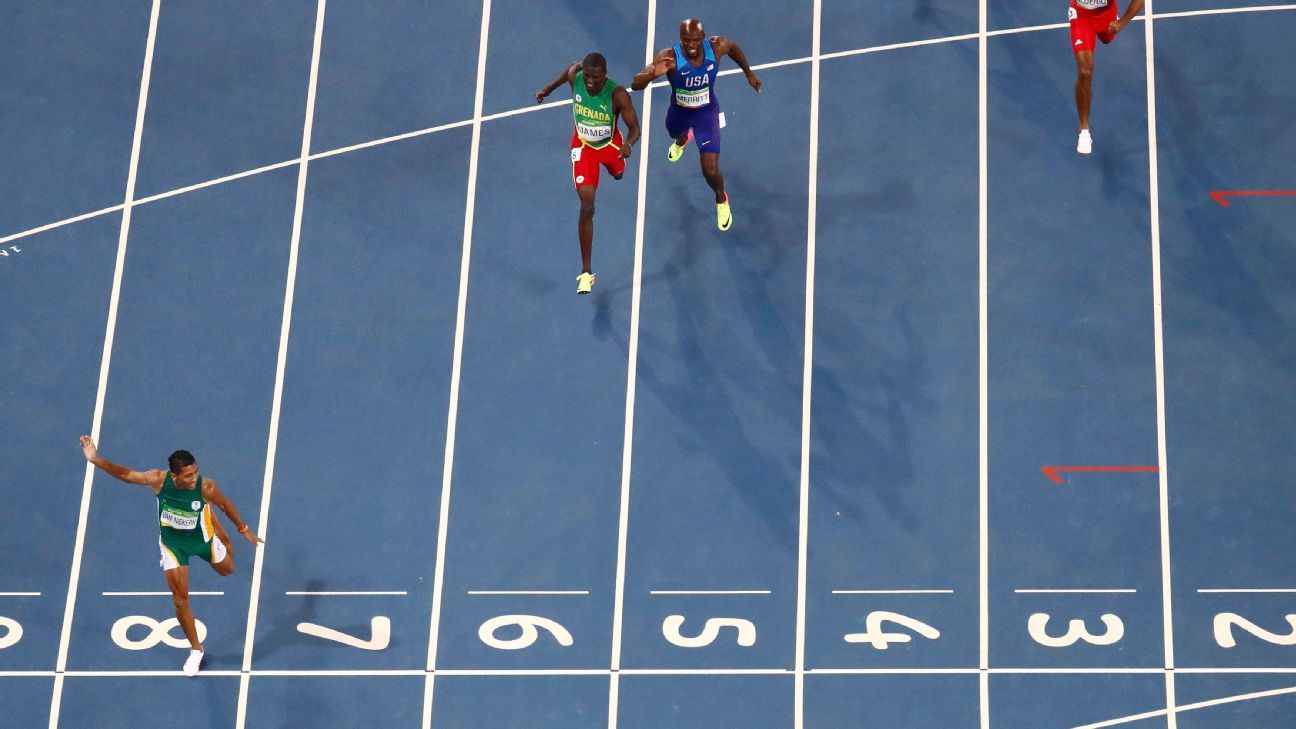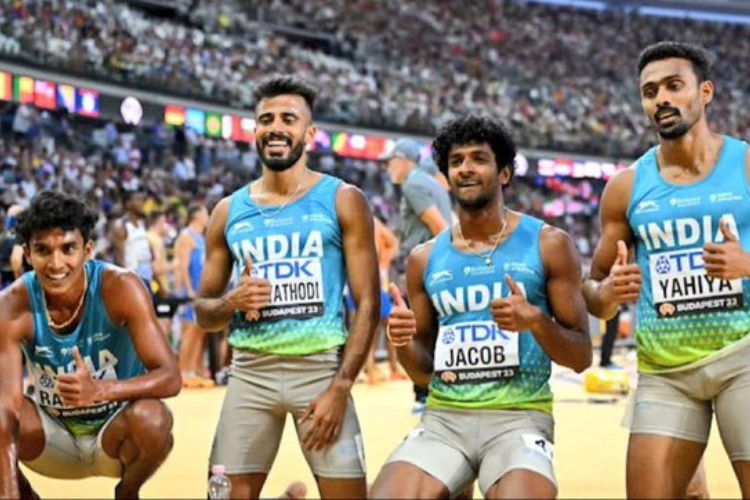The History and Evolution of the 400m Final

The 400m final, a thrilling spectacle of speed, endurance, and tactical prowess, has captivated audiences for over a century. Its evolution, marked by breakthroughs in technique, training methods, and technology, has transformed the event into a showcase of human athletic potential.
The Early Years and the Rise of the Quarter Mile
The 400m final, originally known as the quarter mile, emerged as a distinct event in the late 19th century. Early races were characterized by a focus on pure speed, with runners relying on their natural abilities to cover the distance. The early 20th century saw the emergence of specialized training methods and techniques, such as the “quarter-mile” training regimen developed by American coach Lawson Robertson. This approach emphasized building speed and endurance through interval training and focused on developing a strong finish.
The Golden Age of the 400m
The 1950s and 1960s marked a golden age for the 400m, with the emergence of legendary athletes like American Otis Davis and Australian Herb Elliott. Davis, the 1960 Olympic champion, introduced a new approach to the race, focusing on a strong start and a powerful finish. Elliott, the 1958 world record holder, emphasized the importance of maintaining a consistent pace throughout the race.
The Evolution of Technique and Training
The 400m final has seen significant advancements in technique and training methods over the years. The development of specialized training programs, including interval training, strength and conditioning, and biomechanics analysis, has enabled athletes to push the limits of human performance. Modern runners focus on developing a smooth, efficient running style that minimizes energy expenditure while maximizing speed.
The Impact of Technology
Technology has played a significant role in the evolution of the 400m final. The development of sophisticated timing systems, such as electronic timing, has ensured greater accuracy and precision in recording race times. The use of video analysis and biomechanics software has allowed coaches to identify and correct technical flaws in their athletes’ running form.
The Future of the 400m Final, 400 m final men
The future of the 400m final is bright, with continued advancements in technology and training methods promising even faster times and more exciting races. The event remains a captivating display of athleticism and human potential, and its evolution will continue to shape the sport for generations to come.
The Key Players and Their Strategies: 400 M Final Men

The 400m final is a thrilling spectacle of speed, endurance, and tactical prowess. The top contenders in this race are a mix of seasoned veterans and rising stars, each with their unique strengths, weaknesses, and racing styles. Understanding these athletes and their strategies can help us appreciate the intricacies of this demanding event.
The Contenders’ Strengths, Weaknesses, and Racing Styles
The top contenders in the 400m final bring a diverse set of skills and strategies to the track.
- Athlete 1: Known for their blistering speed and aggressive start, Athlete 1 often takes the lead early in the race. Their strength lies in their powerful acceleration, which allows them to quickly build a gap on the competition. However, maintaining this pace over the full 400m can be a challenge, and their endurance may be tested in the latter stages of the race.
- Athlete 2: A master of pacing and strategy, Athlete 2 typically starts conservatively and gradually increases their speed throughout the race. Their strength lies in their ability to maintain a consistent pace and conserve energy, making them a formidable opponent in the final stretch. However, they may struggle to match the initial speed of more aggressive runners.
- Athlete 3: With a powerful finishing kick, Athlete 3 often waits until the final 100m to make their move. Their strength lies in their explosive burst of speed at the end of the race, making them a dangerous competitor. However, their late surge requires precise pacing and strategic positioning to ensure they are in a good position to unleash their final kick.
Strategies Used by Athletes
The 400m final is a race of strategy and execution. Athletes employ a variety of techniques to gain an advantage, including pacing, tactics, and finishing kicks.
- Pacing: Athletes must carefully manage their energy throughout the race. Some runners opt for an aggressive start, aiming to build a lead early on. Others prefer a more conservative approach, saving their energy for the final stages of the race.
- Tactics: The 400m final is often a tactical battle, with athletes vying for the best position on the track. Runners may use various tactics to gain an advantage, such as staying close to the inside lane, using the draft of other runners, or making strategic moves to avoid traffic.
- Finishing Kicks: A powerful finishing kick is crucial in the 400m final. Athletes often save their best burst of speed for the final 100m, aiming to overtake their opponents in the final stretch.
The Role of Mental Strength and Focus
The 400m final is a grueling test of both physical and mental strength. Athletes must maintain their focus and determination throughout the race, even when faced with fatigue and pain.
- Mental Toughness: The ability to push through discomfort and maintain focus is essential for success in the 400m final. Athletes must be able to withstand the physical and mental demands of the race and stay focused on their goals.
- Visualization: Many athletes use visualization techniques to mentally prepare for the race. They imagine themselves running the race perfectly, visualizing their pacing, their movements, and their finish.
- Positive Self-Talk: Positive self-talk can help athletes stay motivated and confident throughout the race. They may repeat positive affirmations to themselves, reminding themselves of their strengths and abilities.
The Technical Aspects of the 400m Final
/michaeljohnsonWR400-ShaunBotterill-56a6cc653df78cf77290225c.jpg)
The 400m final is a grueling test of speed, endurance, and tactical acumen. It requires a delicate balance of power and finesse, pushing athletes to their physical and mental limits. To understand the technical intricacies of this event, we delve into the biomechanics and physiology involved, exploring the importance of proper form, technique, and pacing. We also examine how technology and data analysis are employed to optimize performance.
Biomechanics and Physiology
The 400m race is a unique blend of sprinting and middle-distance running. The first 200m are characterized by explosive speed, demanding powerful leg drive and efficient arm action. The latter half of the race requires a shift in strategy, transitioning to a more sustainable pace while maintaining sufficient speed to finish strong.
- Start: The race begins with a powerful explosion from the starting blocks. Athletes must generate maximum force to achieve rapid acceleration, relying on strong leg drive and proper body positioning. The initial 50 meters are crucial for establishing a strong lead and setting the pace for the rest of the race.
- First 200m: This phase is all about speed and power. Athletes maintain a high stride frequency and length, focusing on driving their legs with maximum force and maintaining a smooth, efficient arm swing.
- Second 200m: As the race progresses, fatigue sets in, and athletes must adjust their strategy to maintain speed and endurance. They gradually increase their stride length while reducing their stride frequency, relying on a more efficient running form to conserve energy.
- Finish: The final 100m is a battle of wills. Athletes must dig deep and summon every ounce of remaining strength to cross the finish line first. They may employ a variety of techniques, such as leaning forward or extending their arms, to gain an advantage in the final sprint.
Proper Form and Technique
Proper form and technique are paramount in the 400m final. They ensure efficient energy utilization and minimize the risk of injury.
- Posture: Maintaining a tall, upright posture with a slight forward lean is crucial for optimal running form. This allows athletes to maximize their stride length and minimize energy expenditure.
- Arm Swing: A strong, rhythmic arm swing complements leg drive, propelling the body forward and maintaining momentum. Arms should swing naturally and in opposition to the legs, with elbows bent at a 90-degree angle.
- Foot Strike: A midfoot strike is generally preferred for 400m runners, as it provides a balance of speed and stability. The foot should land directly beneath the center of gravity, allowing for a smooth transition into the next stride.
- Breathing: Proper breathing is essential for maintaining energy levels throughout the race. Athletes typically breathe in through their nose and exhale through their mouth, focusing on a rhythmic and controlled breathing pattern.
Pacing and Strategy
Pacing and strategy are crucial for maximizing performance in the 400m final. Athletes must carefully plan their race strategy, considering their strengths and weaknesses and the competition.
- Even Pacing: Maintaining an even pace throughout the race is often considered the most effective strategy. This approach minimizes the risk of burnout and allows athletes to finish strong.
- Negative Split: A negative split strategy involves running the second half of the race faster than the first half. This approach requires a strong finish and can be effective for athletes with superior endurance.
- Tactical Considerations: Athletes must also consider the competition and their position in the race. If they are in a leading position, they may need to adjust their pacing to discourage challengers. If they are trailing, they may need to run a more aggressive race to catch up.
Technology and Data Analysis
Technology and data analysis are increasingly playing a role in optimizing 400m performance.
- GPS Tracking: GPS trackers provide real-time data on athletes’ speed, distance, and pace. This information allows coaches to analyze performance and identify areas for improvement.
- Biomechanical Analysis: Motion capture technology and biomechanical analysis software can be used to evaluate athletes’ running form and identify areas for improvement in technique.
- Physiological Monitoring: Wearable devices can track athletes’ heart rate, oxygen levels, and other physiological metrics. This data can be used to optimize training and race strategies.
400 m final men – The 400m final men is a race of pure grit and strategy, demanding athletes to push their limits and find that extra gear. It’s a different kind of power than the explosive force needed in pole vaulting, where athletes like nina kennedy soar through the air.
But the determination and focus required for both disciplines are undeniably similar, pushing the human body to its absolute peak. And just like the 400m final men, the pole vault is a captivating display of athleticism, leaving audiences breathless with every attempt.
The 400m final for men is a spectacle of speed and endurance, and few athletes have mastered it like wayde van niekerk. His 2016 Olympic gold medal run, shattering the world record, remains a testament to his exceptional talent.
The 400m final is a race where athletes push their bodies to the limit, making every race a captivating display of athletic prowess.